Mercedes-Benz C Class Cam Chain Guide: Ultimate Essential
The C Class cam chain guide is essential for maintaining your Mercedes-Benz’s engine. It prevents the timing chain from jumping, ensuring engine synchronicity and preventing catastrophic damage. Regular inspection and timely replacement are key to its longevity and your vehicle’s smooth operation.
Owning a Mercedes-Benz C Class is a delightful experience, combining luxury, performance, and cutting-edge engineering. However, like any sophisticated machine, it requires diligent care. One critical component that often raises questions among owners, especially those new to DIY maintenance, is the cam chain guide. When this guide shows signs of wear, it can lead to concerning noises and potentially serious engine problems.
Don’t let the thought of this issue overwhelm you. This guide is designed to demystify the C Class cam chain guide, explaining its function, common issues, and what you need to know to keep your C Class running like the masterpiece it is. We’ll break down everything from the symptoms of wear to the importance of using genuine parts.
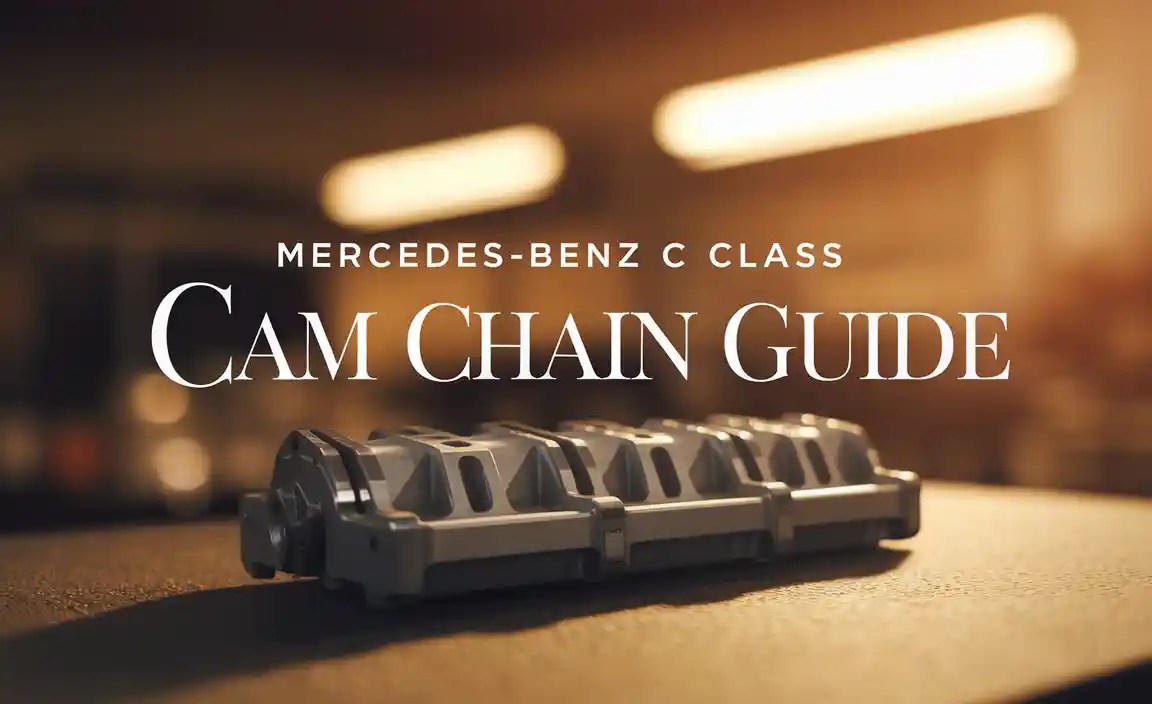
What is a C Class Cam Chain and Its Guide?
At the heart of your Mercedes-Benz C Class’s engine lies a sophisticated system that controls the opening and closing of the engine’s valves. This system relies on a timing chain (often referred to as a cam chain because it drives the camshafts) to synchronize the crankshaft and camshafts. Think of it as the engine’s conductor, ensuring every part moves in perfect harmony.
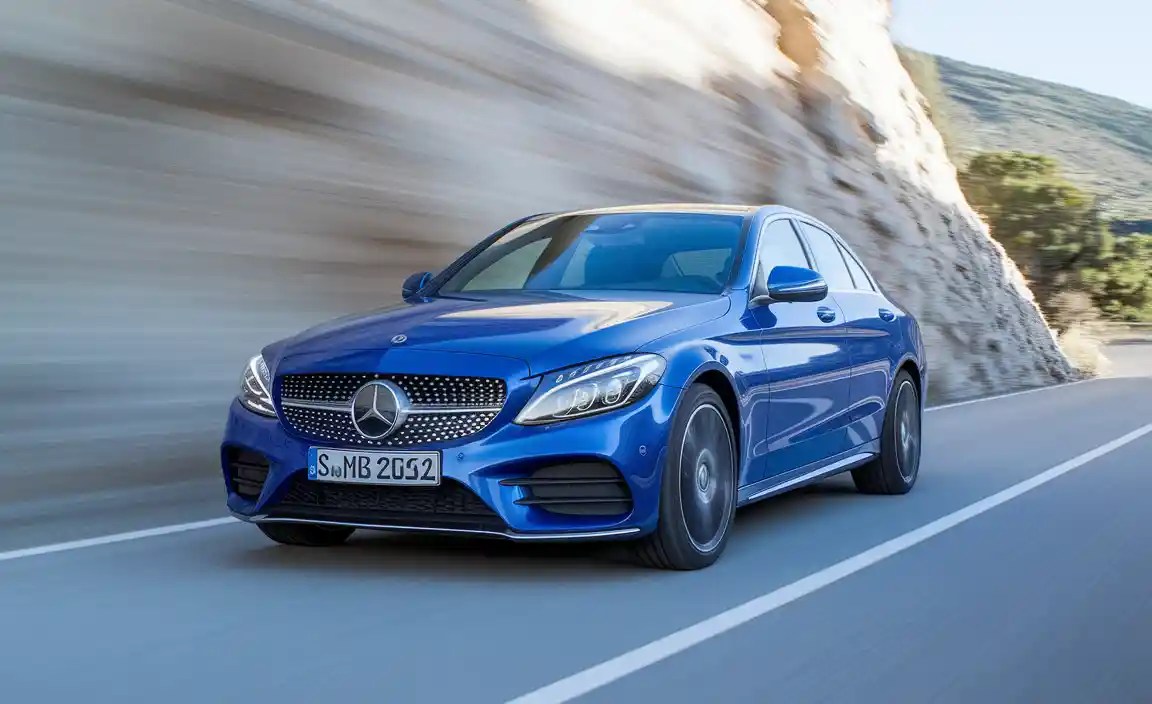
The cam chain itself is a robust loop of interconnected metal links, designed to last for a significant portion of the engine’s life. However, maintaining its precise tension and direction is crucial. This is where the cam chain guide comes in. It’s a series of plastic or metal rails that the timing chain runs along. These guides prevent the chain from slapping against engine components, keep it accurately aligned, and help absorb some of the chain’s vibration.
Why is the Cam Chain Guide So Important?
The cam chain guide acts as a critical support and alignment mechanism for the timing chain. Without these guides, the timing chain could:
- Jump a tooth: This would throw off the engine’s timing, leading to poor performance, stalling, and potentially severe internal engine damage if the valves and pistons collide.
- Slap against other components: This would create excessive noise and wear down both the chain and the guide rapidly, potentially leading to chain failure.
- Become slack: A loose chain loses its ability to maintain precise timing, compromising the engine’s operation.
In essence, the cam chain guide is a guardian of your engine’s timing. Its integrity is directly linked to the health and longevity of your C Class’s powertrain. Neglecting wear on these guides is a gamble no Mercedes-Benz owner should take.
Common Issues with the C Class Cam Chain Guide
Over time and with mileage, the materials used in cam chain guides, particularly the plastic ones common in many Mercedes-Benz engines, can degrade. Several factors contribute to this degradation:
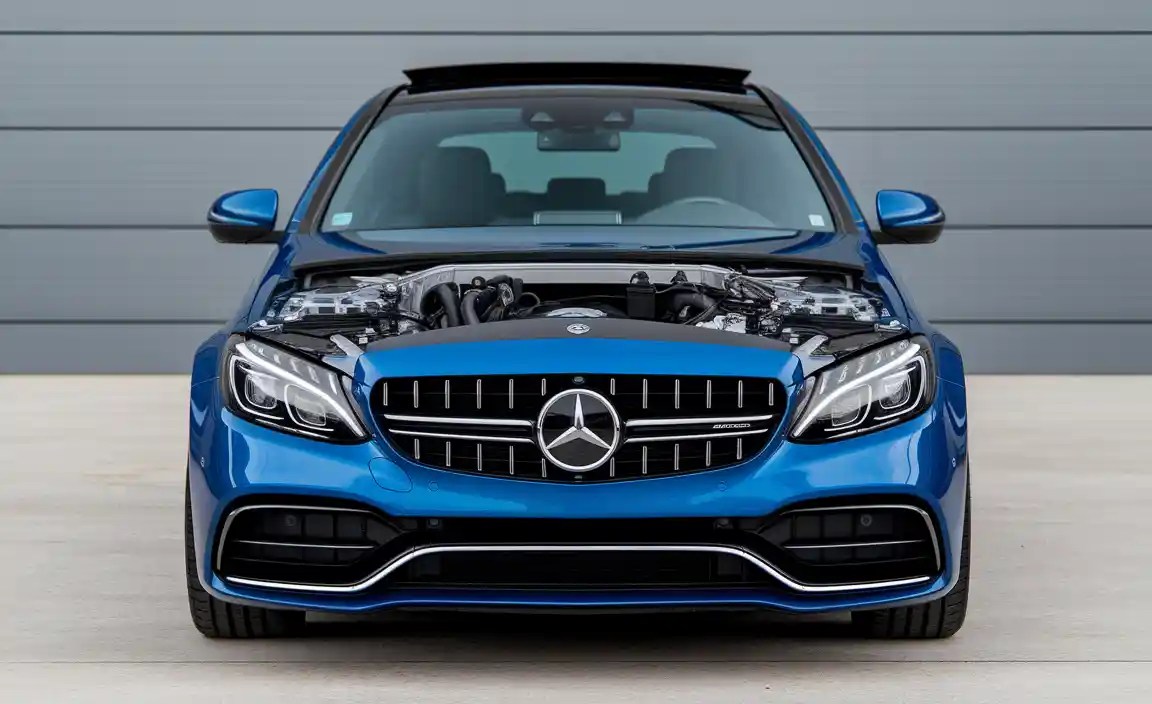
- Heat Cycles: Constant exposure to engine heat causes plastic to become brittle.
- Oil Contamination: While engine oil lubricates, aged or contaminated oil can accelerate wear on certain materials.
- Chain Tensioner Malfunction: If the tensioner that keeps the chain taut fails, the chain can flap against the guides, causing accelerated wear and damage.
- Mileage and Age: Simply put, components wear out. A worn cam chain guide is a common maintenance item on higher-mileage Mercedes-Benz vehicles.
The most prevalent issue is wear, where the plastic on the guides becomes thin, cracked, or breaks away entirely. This material degradation is a significant concern, as small plastic pieces can then circulate in the engine and potentially block oil passages, leading to further lubrication issues.
Symptoms of a Failing C Class Cam Chain Guide
Recognizing the warning signs is crucial for preventing minor issues from becoming major engine problems. Fortunately, a failing cam chain guide often presents noticeable symptoms:
- Rattling or Whirring Noises from the Front of the Engine: This is one of the most common and often earliest indicators. The noise is typically most pronounced on cold starts and may quiet down as the engine warms up. It sounds like the timing chain is loose and slapping against its guides.
- Check Engine Light (CEL): While a CEL can indicate many things, a timing-related fault code might be triggered if the chain has skipped a tooth or if sensors detect abnormal camshaft or crankshaft positions due to incorrect timing.
- Rough Engine Idling: If the engine timing is significantly disturbed, your C Class might idle roughly or even stall.
- Misfires: Incorrect valve timing can lead to incomplete combustion, resulting in engine misfires.
- Decreased Engine Performance: You might notice a loss of power or a less responsive throttle if the engine timing is compromised.
It’s important to note that some of these symptoms can be caused by other engine issues. However, when combined with the characteristic rattling or whirring noise, a failing cam chain guide becomes a prime suspect.
Understanding the C Class Cam Chain System Components
To appreciate the role of the guide, it helps to understand the core components of the timing chain system in your C Class:
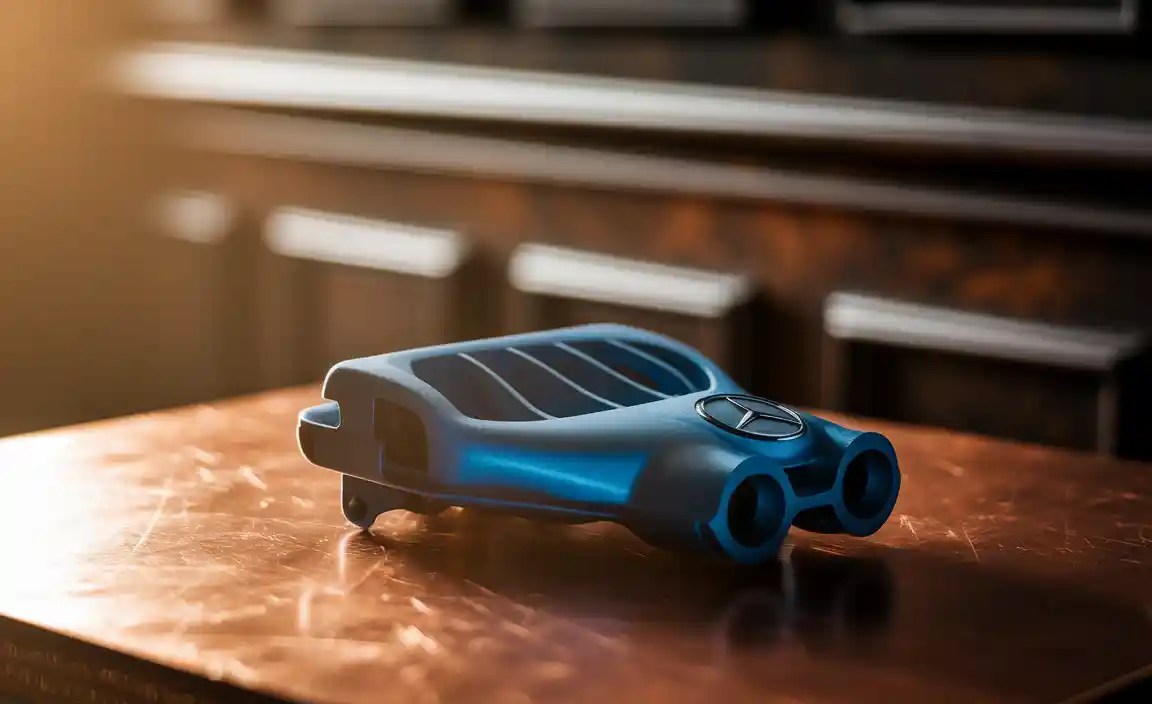
| Component | Function | Material Example |
|---|---|---|
| Timing Chain (Cam Chain) | Connects the crankshaft to the camshaft(s), synchronizing their rotation to control valve timing. | Metal links |
| Camshaft(s) | Rotating shaft(s) with lobes that open and close the engine’s intake and exhaust valves. | Cast iron or billet steel |
| Crankshaft | Converts the linear motion of the pistons into rotational motion, providing power to the wheels. | Forged steel |
| Cam Chain Guides | Plastic or metal rails that the timing chain runs along, keeping it taut and aligned. | High-strength plastic (e.g., Delrin, UHMW-PE) or metal |
| Cam Chain Tensioner | A hydraulic or spring-loaded device that automatically maintains optimal tension on the timing chain, compensating for wear and temperature changes. | Metal with hydraulic or spring mechanisms |
| Sprockets | Toothed wheels attached to the crankshaft and camshaft(s) that engage with the timing chain. | Steel |
The guides are not isolated parts; they work in concert with the tensioner and sprockets. A failure in any of these components can put stress on the others. The tensioner, in particular, is critical. If it fails to keep the chain properly tensioned, the chain will start to drag against the guides, leading to premature wear and the noises described earlier.
The Risks of Ignoring a Worn Cam Chain Guide
Ignoring the tell-tale signs of a worn C Class cam chain guide is a risky proposition. The potential consequences can range from inconvenient to financially devastating:
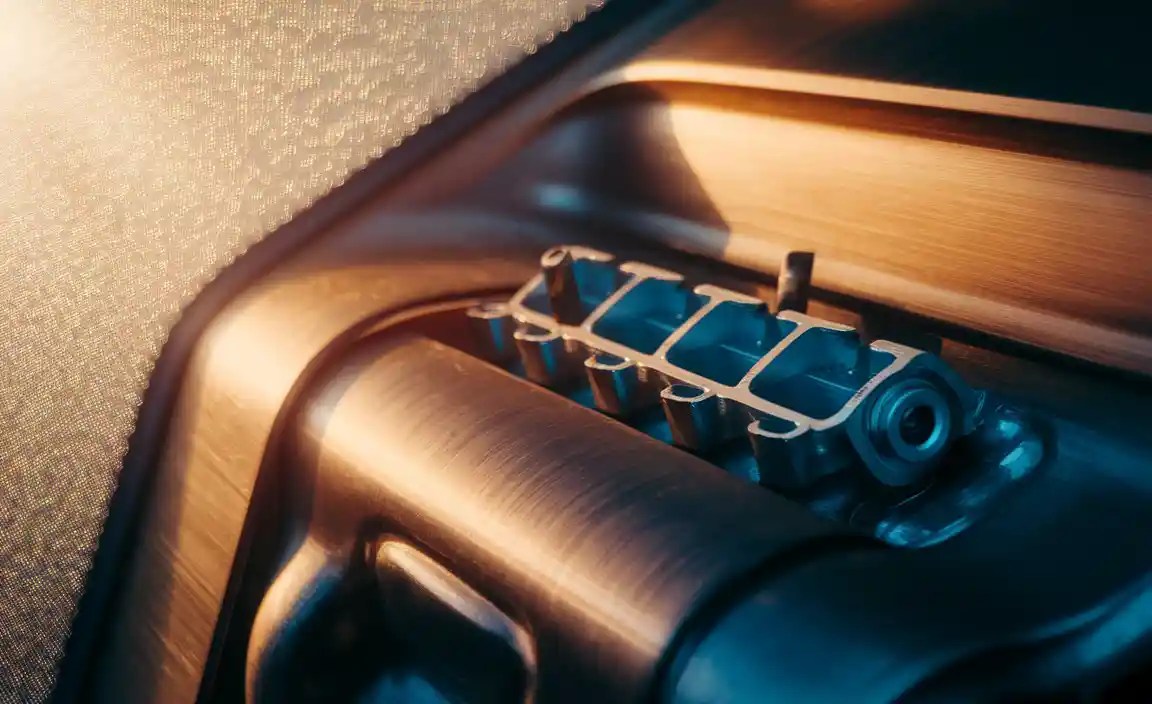
- Degraded Performance: Even minor timing deviations can lead to a noticeable drop in your C Class’s smooth operation and power delivery.
- Catastrophic Engine Failure: This is the most severe risk. If the chain jumps several teeth or breaks, the pistons can collide with the valves, causing bent valves, damaged pistons, and potentially requiring a complete engine rebuild or replacement. This is often referred to as “interference engine” damage.
- Oil Starvation: As plastic guides break down, small pieces can break off and travel through the engine’s oil passages. These fragments can clog the oil pump pickup screen or oil galleys, leading to a loss of oil pressure and oil starvation, severely damaging internal engine components.
- Expensive Repairs: Replacing a cam chain guide often involves removing a significant portion of the engine’s front end, including timing covers, pulleys, and sometimes even the engine itself. This is a labor-intensive job, and if left too long, the cost of repairing the resulting damage will far exceed the cost of a timely replacement.
The Mercedes-Benz M271 engine, found in many W203 and W204 C Class models, is known to be susceptible to cam chain and guide wear. Early models, in particular, had guides made of a material that degraded over time. While Mercedes-Benz has updated parts, mileage remains a significant factor.
What to Do: Inspection and Replacement
If you suspect an issue with your C Class’s cam chain guide, or if your vehicle has reached a mileage where inspection is recommended, it’s time to take action. For most DIY enthusiasts and even for professional mechanics, this is not a task to be taken lightly.
When Should You Inspect?
- Audible Symptoms: Any rattling or whirring from the front of the engine, especially on startup, warrants immediate investigation.
- High Mileage: For engines known to have this issue (like the M271), inspecting the guides around the 80,000-120,000 mile mark is prudent. Consult your owner’s manual or a trusted Mercedes-Benz specialist for model-specific recommendations.
- Check Engine Light: If you get timing-related diagnostic trouble codes (DTCs), especially P0010, P0011, P0012, P0016, P0340, etc., a cam chain system issue should be high on your diagnostic list.
The Inspection Process (Typically Professional)
A thorough inspection usually requires some disassembly. Mechanics will typically:
- Remove the valve cover(s).
- Inspect the visible portions of the cam chain guides for signs of wear, cracking, or missing pieces.
- Check the tensioner’s operation.
- Inspect the timing chain itself for wear or stretching.
Due to the complexity and the need to access hidden guides, often a more invasive procedure is required to fully assess the condition. This usually involves removing the front timing cover, which is a significant undertaking.
Replacement Strategy: A Comprehensive Approach
When a cam chain guide is found to be worn, it is highly recommended to replace all related components at the same time. This is because other parts are likely experiencing similar wear or are being stressed by the failing guide. A comprehensive replacement typically includes:
- All cam chain guides
- The timing chain itself
- The cam chain tensioner(s)
- Camshaft sprockets (if visibly worn or recommended by the manufacturer)
- Crankshaft seal and any other seals or gaskets disturbed during the process
This approach ensures that the entire timing system is renewed, preventing future failures due to other worn components and providing peace of mind. Attempting to save money by only replacing the most obviously damaged guide is a false economy.
DIY vs. Professional: A Cost-Benefit Analysis
Replacing a C Class cam chain guide is a complex repair. While some experienced DIYers can tackle it, it requires specialized tools, a good understanding of engine mechanics, and significant time. If you’re not confident, leaving it to a qualified Mercedes-Benz technician is the safer and often more efficient choice.
Tools required for professional replacement often include:
- Torque wrenches
- Socket sets and extensions
- Pry bars
- Specialized timing tools (e.g., for holding camshafts in place)
- Seal pullers and installers
- A service manual specific to your C Class model and year
The labor cost for this job is substantial due to the time involved in disassembling and reassembling the front of the engine. For DIYers, the cost savings primarily come from avoiding this labor expense, but it comes with the risk of making mistakes.
Choosing the Right Parts: OEM vs. Aftermarket
When it comes to critical engine components like cam chain guides, the choice of parts is paramount. For your Mercedes-Benz C Class, sticking to Original Equipment Manufacturer (OEM) parts is generally the safest bet.

- OEM Parts: These are parts manufactured by or for Mercedes-Benz. They are designed to meet the exact specifications and quality standards of your vehicle. For cam chain guides, this means the correct material composition, dimensions, and durability ratings to ensure proper fitment and longevity. You can typically source these from an authorized Mercedes-Benz dealership or reputable online OEM parts suppliers. While they tend to be more expensive, their reliability is usually uncompromised. Genuine Mercedes-Benz Parts are engineered for optimal performance and safety.
- Aftermarket Parts: These are produced by third-party manufacturers. The quality of aftermarket parts can vary dramatically. Some reputable aftermarket brands produce excellent components that meet or exceed OEM standards. However, others may cut corners, using inferior materials or less precise manufacturing, which can lead to premature failure, noise issues, or even damage. If considering aftermarket parts, thorough research into brand reputation and specific part reviews is essential. For critical components like timing chains and guides, it’s often wise to seek out premium aftermarket brands known for their commitment to quality.
Given the critical nature of the cam chain system, investing in high-quality, reliable parts is non-negotiable for the health and longevity of your C Class engine.
Maintenance Schedule and Best Practices
Unlike oil changes or tire rotations, there isn’t a universally fixed “replace cam chain guide” interval for all C Class models. However, incorporating a proactive approach to maintenance can prevent most issues:
- Regular Oil Changes: Use high-quality synthetic oil that meets or exceeds Mercedes-Benz specifications. Fresh oil ensures the chain tensioner operates correctly and lubricates all moving parts effectively. Refer to your owner’s manual for the correct oil type (e.g., API SP or MB-Approval 229.5). Often, the correct specifications are crucial, not just a general “synthetic oil”.
- Listen to Your Engine: Be attuned to any new or unusual noises, especially from the front of the engine. Early detection is key.
- Address Warning Lights Promptly: Don’t ignore the Check Engine Light. Have diagnostic codes read and address them systematically.
- Follow Manufacturer Recommendations: Consult your C Class’s service manual or a Mercedes-Benz specialist for any specific mileage or age-based inspections recommended for your engine variant.
- Consider a Proactive Replacement on High-Mileage Vehicles: If your C Class has exceeded 100,000 miles and you don’t know the history of the timing chain system, consider having it inspected or proactively replacing the guides, chain, and tensioner during a major service. This can be a preventative measure against a much larger repair bill down the road.
A well-maintained engine with proper lubrication and timely inspections is your best defense against premature wear of components like the cam chain guide.
Frequently Asked Questions (FAQ)
Q1: How much does it cost to replace the C Class cam chain guide?
A1: The cost can vary significantly depending on your location, the specific C Class model and engine, and whether you use a dealership or an independent mechanic. For a full replacement of chain, guides, and tensioner, expect costs to range from $1,500 to $4,000 or more due to the labor-intensive nature of the job.
Q2: How long does a C Class cam chain guide typically last?
A2: This depends heavily on the engine variant, driving conditions, and maintenance. On some Mercedes-Benz engines, including certain C Class models, guides can start showing wear after 80,000 to 120,000 miles. However, they can also last much longer if properly maintained and if they are of the more robust material variants.
Q3: Can I drive my C Class with a worn cam chain guide?
A3: It is strongly advised not to. While the engine might run, the risk of the chain jumping a tooth or breaking increases exponentially, leading to severe and costly engine damage. Any rattling noise from the front of the engine related to the timing chain should be attended to immediately.
Q4: What is the difference between a cam chain and a timing belt?
A4: A timing belt is a rubber belt with teeth, while a timing chain is a metal chain. Chains are generally designed to last the lifetime of the engine and require less frequent replacement than timing belts, but they are not maintenance-free and can still wear out or develop issues, as seen with the guides.






